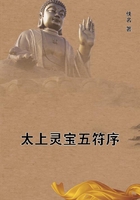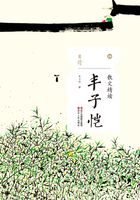Raphael Michael Sun Heart Lion Swan Carbuncle Gabriel Gabriel Moon Left foot Cat Owl Crystal Camael Zamael Mars Right Wolf Vulture Diamond hand Michael Raphael Mercury Left hand Ape Stork Agate Zadikel Sachiel Jupiter Head Hart Eagle Sapphire (=Lapis lazuli)Haniel Anael Venus Generative Goat Dove Emerald organs Zaphhiel Cassiel Saturn Right foot Mole Hoopoe Onyx The names of the angels are from Mr Mather's translation of _Clavicula Salomonis_; the other correspondences are from the second book of Agrippa's _Occult Philosophy_, chap. x.
In many cases these supposed correspondences are based, as will be obvious to the reader, upon purely trivial resemblances, and, in any case, whatever may be said--and I think a great deal may be said--in favour of the theory of symbology, there is little that may be adduced to support the old occultists' application of it.
So essential a part does the use of symbols play in all magical operations that we may, I think, modify the definition of "magic"adopted at the outset, and define "magic" as "an attempt to employ the powers of the spiritual world for the production of marvellous results, BY THE AID OF SYMBOLS." It has, on the other hand, been questioned whether the appeal to the spirit-world is an essential element in magic.
But a close examination of magical practices always reveals at the root a belief in spiritual powers as the operating causes.
The belief in talismans at first sight seems to have little to do with that in a supernatural realm; but, as we have seen, the talisman was always a silent invocation of the powers of some spiritual being with which it was symbolically connected, and whose sign was engraved thereon. And, as Dr T. WITTON DAVIESwell remarks with regard to "sympathetic magic": "Even this could not, at the start, be anything other than a symbolic prayer to the spirit or spirits having authority in these matters.
In so far as no spirit is thought of, it is a mere survival, and not magic at all...."[1]
[1] Dr T. WITTON DAVIES: _Magic, Divination, and Demonology among the Hebrews and their Neighbours_ (1898), p. 17.
What I regard as the two essentials of magical practices, namely, the use of symbols and the appeal to the supernatural realm, are most obvious in what is called "ceremonial magic". Mediaeval ceremonial magic was subdivided into three chief branches--White Magic, Black Magic, and Necromancy. White magic was concerned with the evocations of angels, spiritual beings supposed to be essentially superior to mankind, concerning which I shall give some further details later--and the spirits of the elements,--which were, as I have mentioned in "Some Characteristics of Mediaeval Thought,"personifications of the primeval forces of Nature. As there were supposed to be four elements, fire, air, water, and earth, so there were supposed to be four classes of elementals or spirits of the elements, namely, Salamanders, Sylphs, Undines, and Gnomes, inhabiting these elements respectively, and deriving their characters therefrom. Concerning these curious beings, the inquisitive reader may gain some information from a quaint little book, by the Abbe de MONTFAUCON DE VILLARS, entitled _The Count of Gabalis, or Conferences about Secret Sciences_(1670), translated into English and published in 1680, which has recently been reprinted. The elementals, we learn therefrom, were, unlike other supernatural beings, thought to be mortal.
They could, however, be rendered immortal by means of sexual intercourse with men or women, as the case might be; and it was, we are told, to the noble end of endowing them with this great gift, that the sages devoted themselves.
Goety, or black magic, was concerned with the evocation of demons and devils--spirits supposed to be superior to man in certain powers, but utterly depraved. Sorcery may be distinguished from witchcraft, inasmuch as the sorcerer attempted to command evil spirits by the aid of charms, _etc_., whereas the witch or wizard was supposed to have made a pact with the Evil One; though both terms have been rather loosely used, "sorcery" being sometimes employed as a synonym for "necromancy".
Necromancy was concerned with the evocation of the spirits of the dead:
etymologically, the term stands for the art of foretelling events by means of such evocations, though it is frequently employed in the wider sense.
It would be unnecessary and tedious to give any detailed account of the methods employed in these magical arts beyond some general remarks.
Mr A. E. WAITE gives full particulars of the various rituals in his _Book of Ceremonial Magic_ (1911), to which the curious reader may be referred.
The following will, in brief terms, convey a general idea of a magical evocation:--Choosing a time when there is a favourable conjunction of the planets, the magician, armed with the implements of magical art, after much prayer and fasting, betakes himself to a suitable spot, alone, or perhaps accompanied by two trusty companions. All the articles he intends to employ, the vestments, the magic sword and lamp, the talismans, the book of spirits, _etc_., have been specially prepared and consecrated.
If he is about to invoke a martial spirit, the magician's vestment will be of a red colour, the talismans in virtue of which he may have power over the spirit will be of iron, the day chosen a Tuesday, and the incense and perfumes employed of a nature analogous to Mars. In a similar manner all the articles employed and the rites performed must in some way be symbolical of the spirit with which converse is desired.
Having arrived at the spot, the magician first of all traces the magic circle within which, we are told, no evil spirit can enter; he then commences the magic rite, involving various prayers and conjurations, a medley of meaningless words, and, in the case of the black art, a sacrifice.















